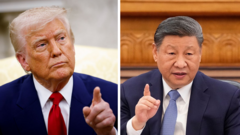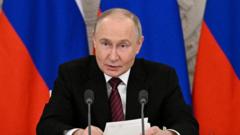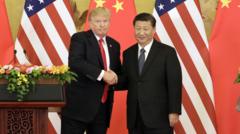The agreement to lower import taxes between the US and China establishes a new phase in their economic relationship, impacting markets and trade practices worldwide.
Trade Truce: US and China Reach Tariff Reduction Agreement

Trade Truce: US and China Reach Tariff Reduction Agreement
The recent US-China tariff deal signals a significant easing of tensions and could reshape global trade dynamics.
In a marked turn from their escalating trade war, the US and China have finalized a tariff reduction deal that will ease financial strain across sectors. This truce, announced by both nations, includes the cancellation of certain tariffs and a temporary suspension of others over the next 90 days, effective until mid-May. The adjustments mean that recent US tariffs on Chinese goods will drop significantly, from a staggering 145% to 30%, while Chinese tariffs on US imports will decrease from 125% to just 10%. Additionally, China has agreed to stop critical mineral export restrictions that were aimed at countering US tariff escalations.
The announcement was made after productive negotiations took place in Switzerland, marking the first high-level talks since President Trump initiated the renewed tariffs earlier this year. Despite ongoing frictions, both nations seem inclined to avoid a complete economic decoupling, with statements from US Treasury Secretary Scott Bessent indicating mutual interest in further cooperation.
The deal has implications for the import-export balance between the two economies, with the US heavily reliant on Chinese electronics and smartphones—particularly crucial for tech giants like Apple—which account for a significant portion of American imports. Conversely, the US exports key agricultural products to China, including soybeans for its large livestock population.
While the situation may appear stabilized for now, the lingering 20% tariff aimed at curbing illicit fentanyl trade signifies unresolved issues. Experts emphasize that the agreement is not definitive, as further negotiations are planned and could alter the landscape of tariffs again.
Politically, both sides claim a form of victory from this engagement, albeit with different interpretations. Observers suggest that China may perceive this as a tactical advantage, with its government feeling reinforced in its bargaining position, while the US administration relays success in its negotiations. Economists also note that this modified tariff landscape—combined with the UK-US trade agreement—could define the future tariff environment for the US, suggesting a strategic balance might be reached.
As the global markets respond positively to renewed stability between these dominant economies, anticipated rebounds in shipping and trade activity indicate an optimistic outlook, albeit with caution due to potential future developments in negotiations.





















